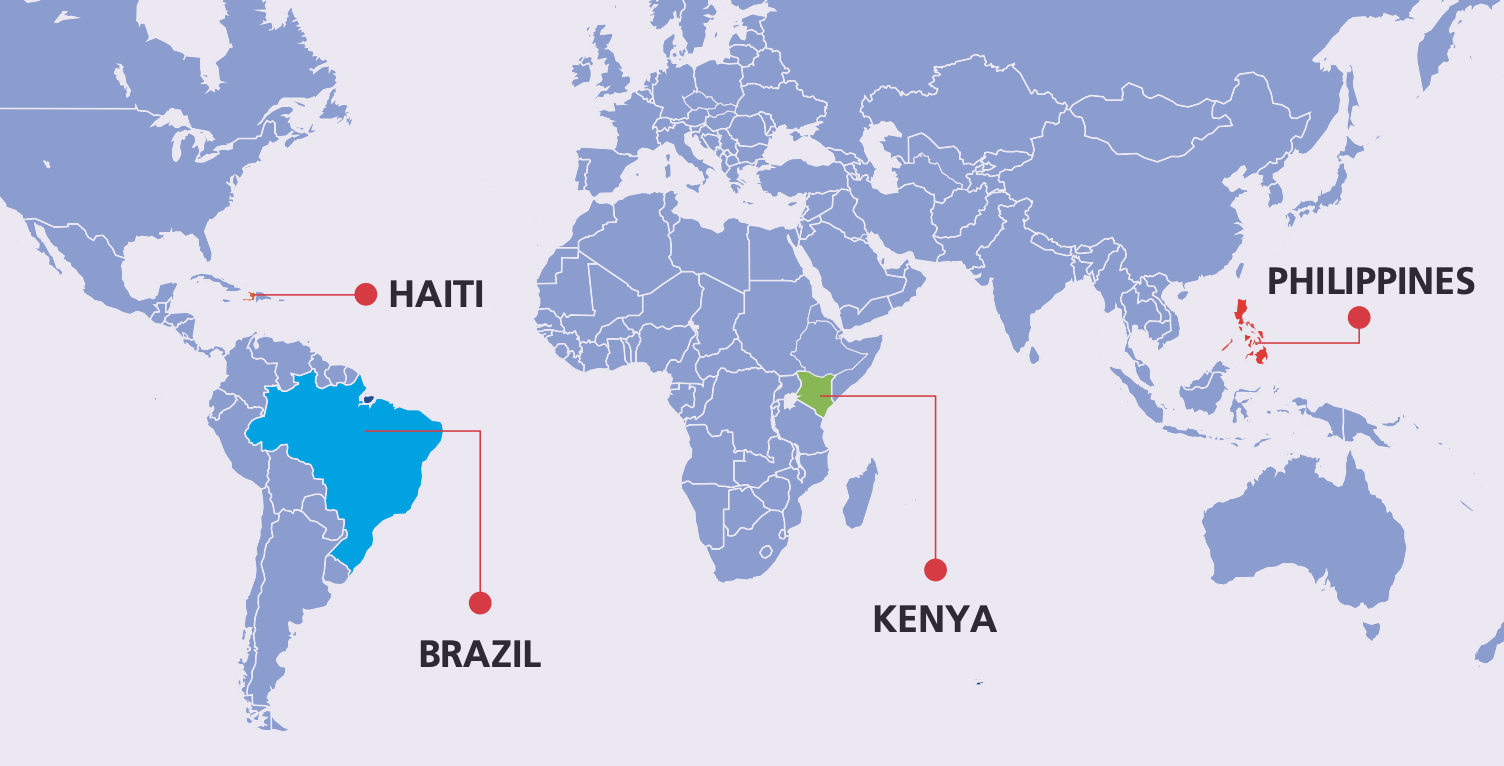EDITOR’S NOTE: After publication, parts of this article were found to contain information that was not properly attributed to the original source material. We have added the proper attributions, which are indicated in bold in the text below. Reasons to be Cheerful’s policy is that, in all cases, information in articles must be clearly attributed to its original source. We regret the error. To view our official policies on sourcing and attribution, visit our About Us page.
Kampung Akuarium, a set of white apartment blocks on the waterfront of Indonesia’s capital Jakarta, looks much like you’d expect accommodation in a modern city to be: in its five-story towers, staircases connect corridors lined with doors on each level.
But the building has some subtle design aspects that offer clues to its ulterior purpose. In front of each apartment door, there’s a two-foot deep space where residents can sell goods, and the sets of stairs are shallow, so inhabitants can see and talk between the “half floors” directly opposite them.
“It’s made so that the residents can live in close proximity like they did previously,” says Amalia Nur Indah Sari, an architect for the Rujak Center for Urban Studies, a Jakarta-based nonprofit that supported the development of the apartments.
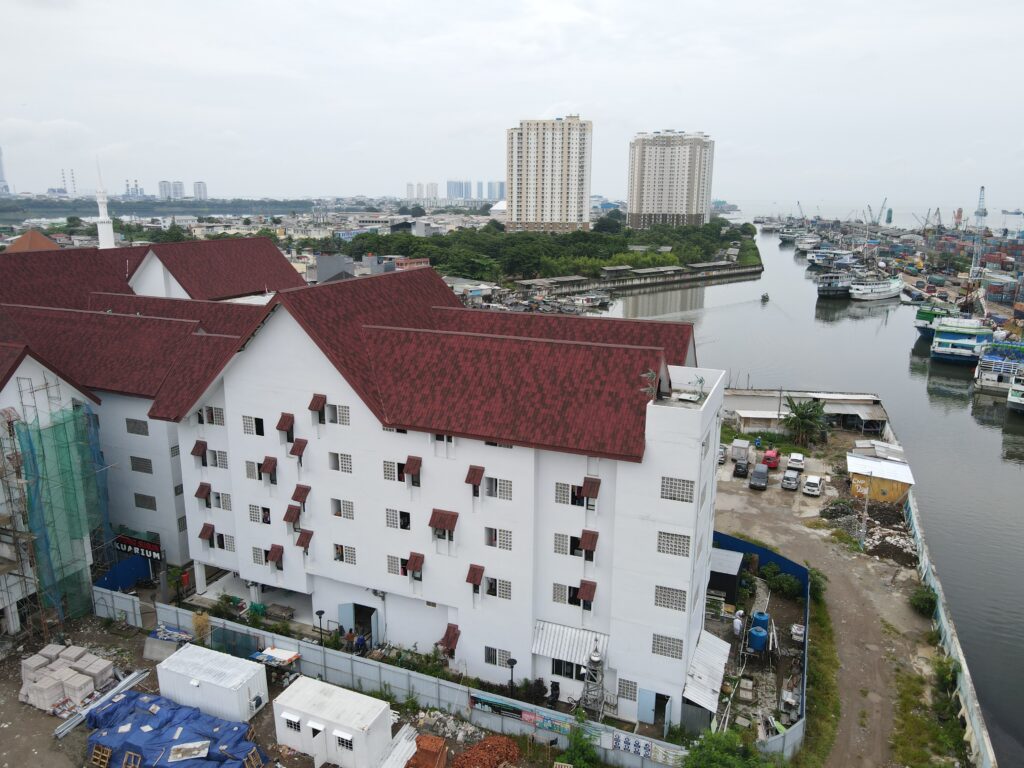
The “close proximity” Sari refers to was a slum of the same name that occupied the same hectare of land from which the Kampung Akuarium apartments now rise. Designed and managed entirely by its hundreds of residents, the project is seen as pioneering a new model of architecture – one that improves urban neighborhoods in a way that works for, and is directly informed by, the needs of vulnerable, low-income inhabitants.
This so-called “collective housing” model, where residents actively participate in upgrading their communal living spaces in a way that respects their ways of life could be a blueprint for quickly-growing cities across the globe like Delhi, Lagos, Nairobi and Jakarta. More than one billion people now live in slums or informal settlements — one in eight of the world’s population — and an additional three billion will require adequate and affordable housing by 2030, underlining the need for a housing model that works
“Urbanization is accelerating and we are expecting the real growth still to come now,” says Kerstin Sommer, project manager of UN-Habitat’s participatory slum upgrading program. “Pressures and population growth are still high, and land, time, and political pressures are intense. It’s a very widespread, burning issue.”
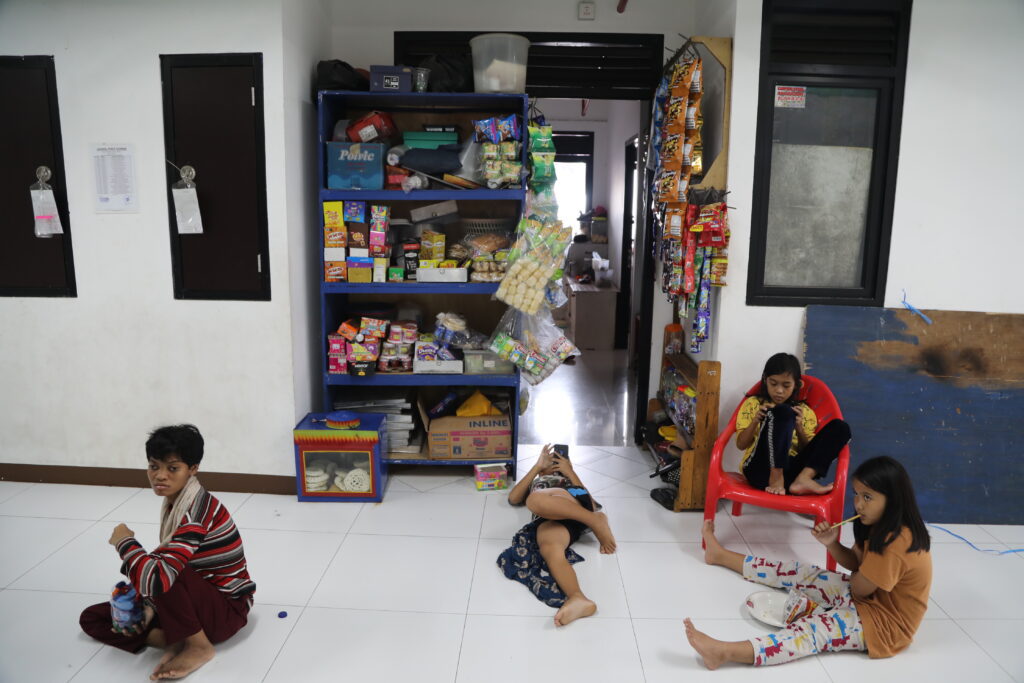
Kampung Akuarium, which is the first municipal housing in Jakarta managed by residents, contains commercial spaces with a laundry, guesthouse, cafeteria, water refill station and garden run by the inhabitants, who lounge around in circles chatting, watering potted plants and playing games of table tennis. The basement of each block is dedicated to public services such as a clinic, a library and office spaces. Maintenance is divided up between residents: a technician living in one apartment fixes broken appliances for a small fee, a carpenter builds furniture, and everyone helps out with cleaning.
Yet arriving at this point was a hard-fought process that involved years of political campaigning, participatory planning and outright determination.
Reversing an eviction
For decades, Kampung Akuarium was an urban slum occupied by some of the city’s poorest, many of whom had migrated from other parts of the country in search of employment. Over time, they made the land their own, constructing 241 homes and a network of informal stores selling food and goods to each other.
“When my parents moved here as teenagers it was abandoned land,” says Ibu Yani Dharma Diane, a 46-year-old resident who was born in the slum. “People built the houses from scrap wood and metal and it became more dense over time. It was a happy time. We would swim in the sea, catch fish and play.”
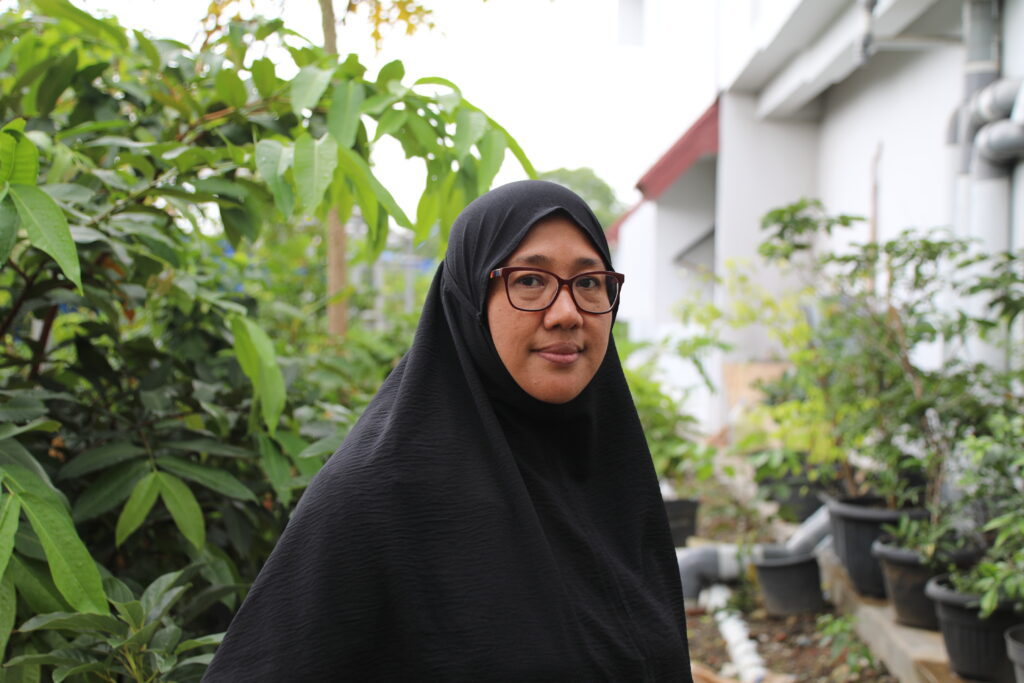
But as the population of Jakarta ballooned – from just under four million in 1970 to more than 11 million today – so did pressure to develop land. Kampung Akuarium’s location, in a central area next to the historic Sunda Kelapa port and the city’s oldest mosque, gave it significant economic potential if re-developed.
Those pressures eventually led to Jakarta’s provincial government taking action against the slum dwellers, who, despite occupying the land since the 1970s, had technically done so illegally. It was said to be in order to build seawall protections.

According to events described in the Routledge Handbook of Urban Indonesia, in the first days of April 2016, residents began receiving letters from city authorities ordering them to immediately vacate their houses. Then, on April 11, several hundred public order officers, police and soldiers carried out a brutal eviction, razing the entire slum to the ground. “I was surprised, upset and angry,” says Diane. “The eviction was so sudden.”
Jakarta City Hall did not respond to a request for comment.
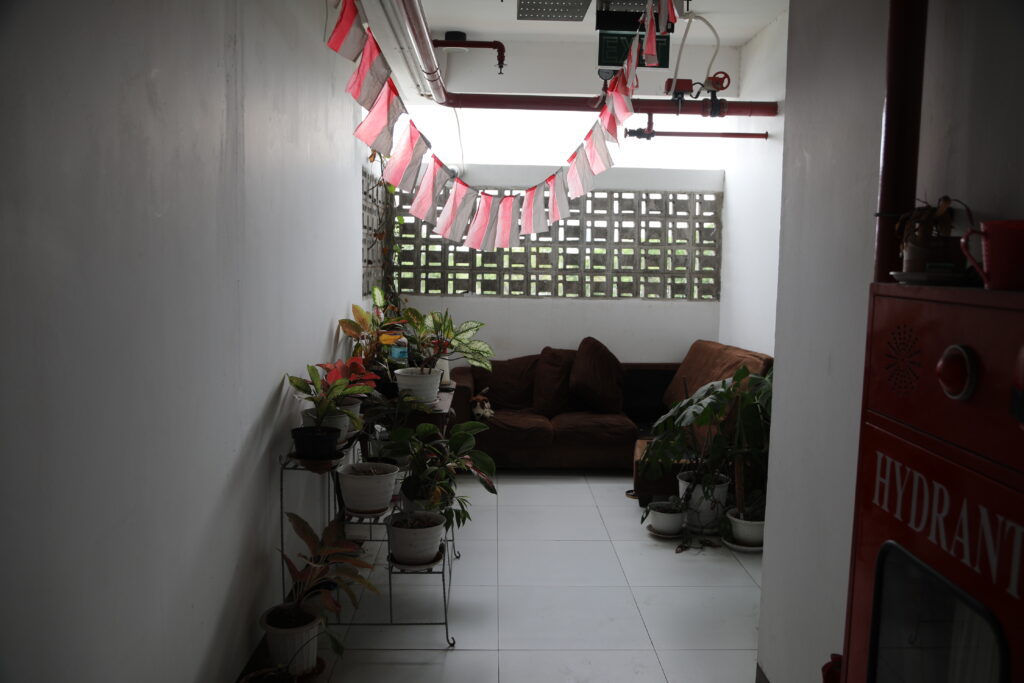
According to that description, following the eviction, residents were forced to scatter. Initially, some relocated to public housing provided by the government as much as 28 kilometers away, far from their past lives; some tried to rent nearby, despite the high costs; and some were so traumatized that they decided to move back to their hometowns outside of Jakarta. Yet, rather than give up the land where their homes once stood, some families, with the support of humanitarian groups, reoccupied the space. In the first few months, there were 30. Four months later, there were 128. And when the anniversary of the eviction arrived, they began to lobby local politicians for support in return for votes.
Weighed down by negative news?
Our smart, bright, weekly newsletter is the uplift you’ve been looking for.“We chose to stay here,” says Diane, who lived in a makeshift tent on the site with her four children for nearly six months. “We chose our own way.”
It worked. In October 2017, Anies Baswedan, a district leader supportive of the urban poor was elected governor and it was agreed that there would be a new collaborative approach in city management, known as the Collaborative Implementation Program (CIP), to build the people of Kampung Akuarium new social housing.
A new home takes shape
During the process described in the Routledge Handbook on Urban Indonesia, community architects and residents created a 15-person working team to participate in the weekly design workshop, representing residents’ diverse occupations, genders, ages and land ownership status. The community architects and working team met twice a week, with a larger meeting for decision-making processes.
“Professional experts aren’t the sole authority when it comes to finding the best solution to the community’s needs,” says Sari. “In fact, they aren’t even the most important. The residents know what is best for them.”
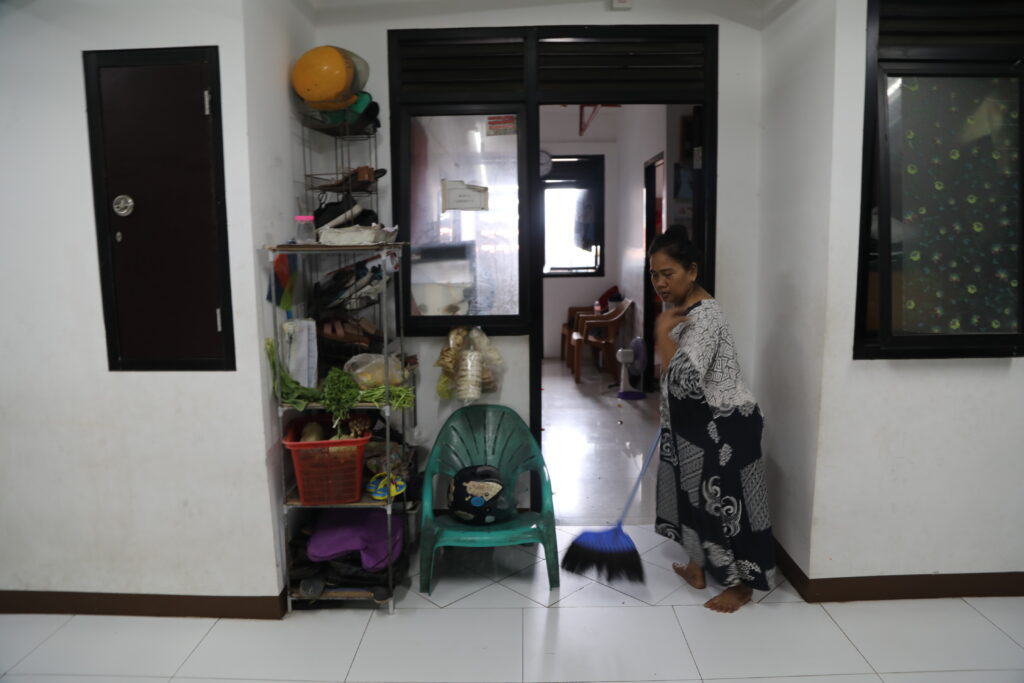
On August 17, 2021, the site, Kampung Susun Akuarium was inaugurated with two buildings complete; the remaining three are set to be finished this year. Many residents, who have formed a cooperative to help manage the residence, have been living in the apartments for over two years. They decided, for example, that elderly residents are given priority for ground-floor apartments.
Sartinah, a 56-year-old housewife, helps out by watering the community garden and cleaning the floors. “It is much better,” says Sartinah, who like many Indonesians has only one name. “I’m not afraid of eviction. I have this security of tenure.”
Teddy Kusnendi, 63, builds bookshelves and cupboards and helps to install kitchen fittings. “It’s close to what we had before,” he says. “And it’s cleaner.”
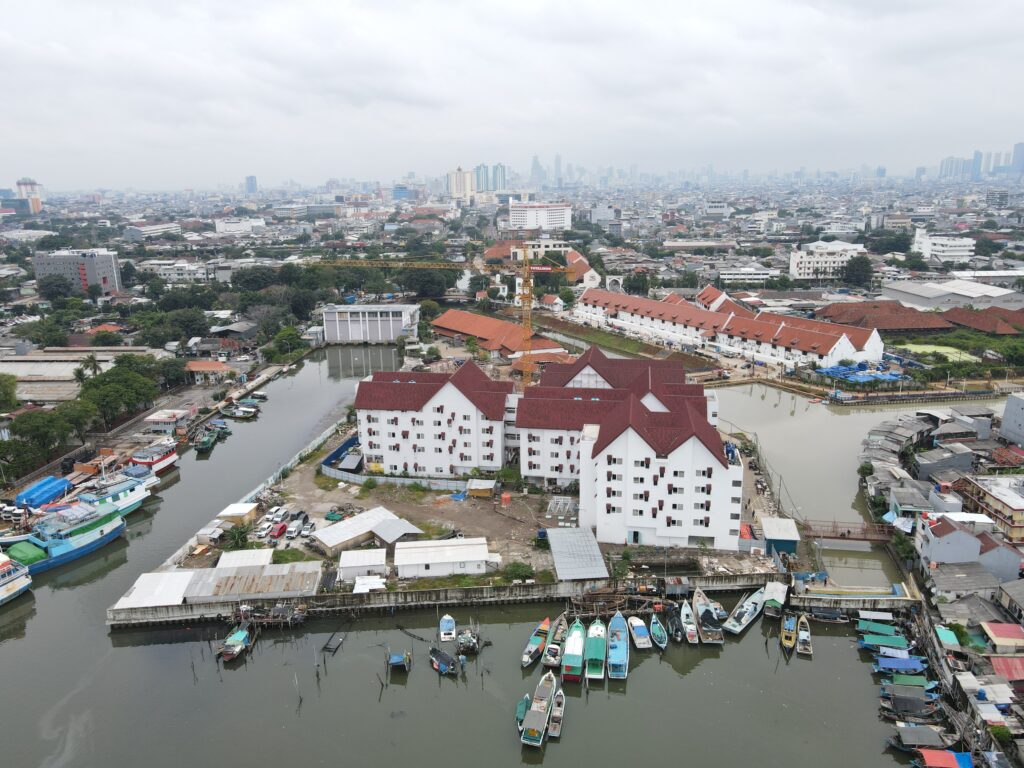
However, some of the residents’ wishes had to be dialed back. Originally, they had wanted two-story blocks, but district regulations mandated a smaller footprint and they therefore had to build higher. They had also wanted bamboo in the structures, but that was rejected on safety grounds.
Even then, the cost – 62 billion rupiah, or about $4 million, which was financed by a fund obliging developers to invest in public projects – was around double that of standard social housing. Whether there is the political will, or indeed, financial backing, for a larger-scale rollout of “collective housing” remains to be seen.
“The challenge is that it’s a demand that can’t be served by the market,” says Sommer of UN-Habitat. “People are forced to go to informal settings because in the end only these are the ones affordable. Therefore, there must be government support.”
But Jakarta authorities have already built on the success of Kampung Akwarium, which is just one of 21 kampung, or informal settlements, that have been prioritized for upgrade. Two smaller redevelopment projects – Kampung Kunir, a 35-unit building, and the 75-unit Kampung Bukit Duri – are now both complete.
Sommer, who cites the Global Action Plan for upgrading informal settlements and slums by 2030, underlines the need for “inclusive” development of cities that takes into account the cultural needs of populations.
“There needs to be this participatory, ‘bottom-up’ approach and co-creational planning tailored for the long-term perspective,” she says. “You need to provide the best living situation possible without causing gentrification or making the problem more precarious for some. Everyone has the right to the city and to live in it.”











